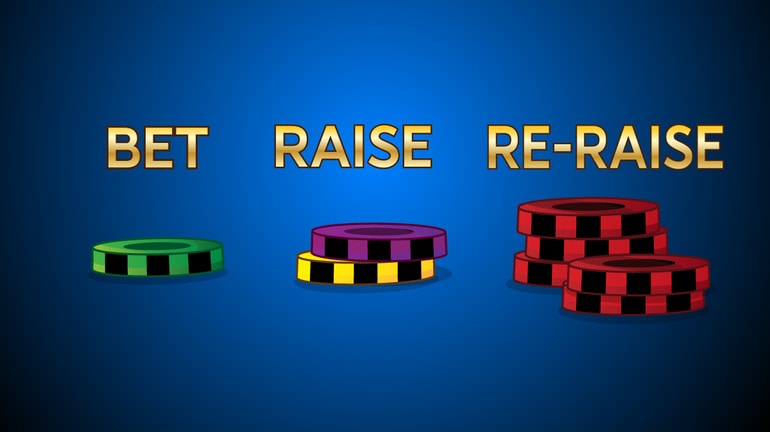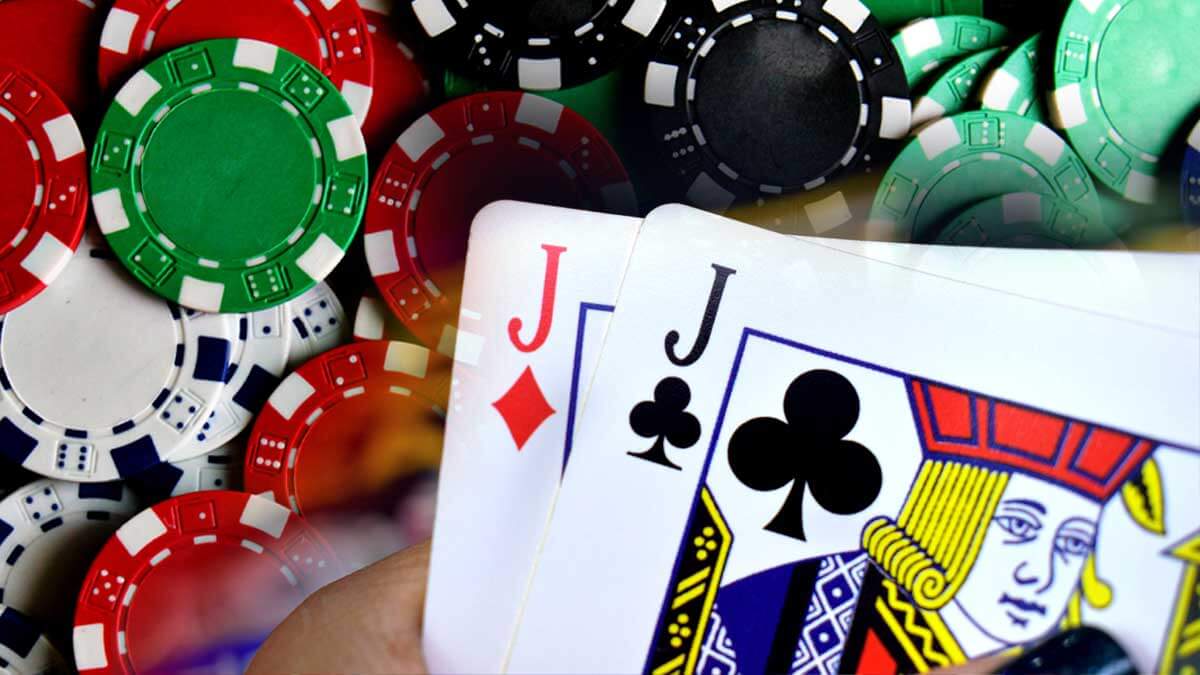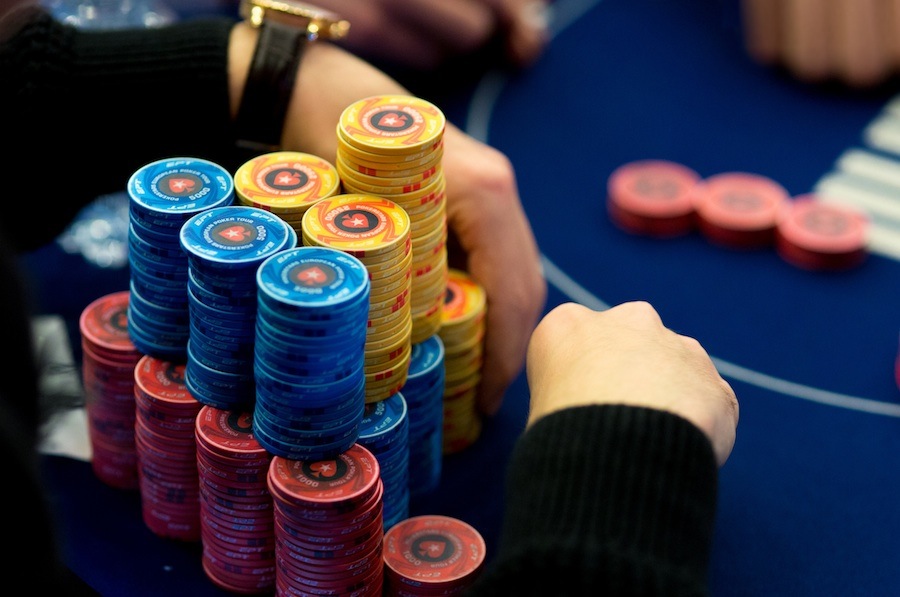About PokerNews. PokerNews.com is the world's leading poker website. Among other things, visitors will find a daily dose of articles with the latest poker news, live reporting from. Rules regarding raising can get a little tricky, especially for games with unstructured betting. In most poker rooms, the raise rule for No-Limit and Pot-Limit play would be phrased something like 'In order to constitute a legal raise, the increase in the wager must be equal to or greater than the amount of the previous bet or raise.'.
A check-raise in poker is a common deceptive play in which a player checks early in a betting round, hoping someone else will open. The player who checked then raises in the same round.[1]
This might be done, for example, when the first player believes that an opponent has an inferior hand and will not call a direct bet, but that they may attempt to bluff, allowing the first player to win more money than they would by betting straightforwardly. The key point is that if no one else is keen to bet, then the most a player can raise by (in a limit game) is one single bet. If someone else bets first, they can raise, thus increasing the value of the pot by two bets.[2] In a no-limit game, there is no restriction on the size of one's bet, and a raise is likely to be much larger than the second player's bet. Of course, if no other player chooses to open, the betting will be checked around and the play will have failed to elicit additional money for the pot. Like a simple check, a failed check-raise provides other players an opportunity to view the next card or cards dealt without requiring the other players to commit more money to the pot. A check-raise thus contains an element of risk because the check-raising player's advantage may deteriorate when new cards are revealed.
While it can be an important part of one's poker strategy, this play is not allowed by a house rule in some home games and certain small-stakes casino games. It is also frequently not allowed in the game of California lowball. Omak washington. In older poker material and among stud and draw poker players, it is sometimes referred to as sandbagging.

Poker Reraise Rules Card Game
Check-raises can also be used as an intimidation technique over the course of a game; a player who has frequently been check-raised may be less likely to attempt to steal the pot.
In online poker games special tracking software can be used to determine the exact percentage of times a player check-raised when they had the opportunity. This information helps to determine if a player who check-raised has a monster hand or is bluffing as part of their routine poker play.
Not all players agree that a check-raise is an especially effective play, however. In Super/System, Doyle Brunson claims to check-raise very rarely in no-limit hold 'em; he contends that it is more profitable to simply bet a quality hand, regardless of whether his opponent will try to bluff. His reasoning for this is twofold: First, a failed check-raise gives other players the chance to see free cards that may improve their hand; second, it makes it obvious to other players that you potentially have a very strong hand. The latter, however, may be used as a strong bluff technique, although the opponent could put in a re-raise to scare off a bluff.
See also[edit]

References[edit]
- ^Cutler, William H. (1975). 'An Optimal Strategy for Pot-Limit Poker'. The American Mathematical Monthly: 368–376.
- ^Billings, Darse; Davidson, Aaron; Schaeffer, Jonathan; Szafron, Duane (2002). 'The challenge of poker'. Artificial intelligence. 134: 237 – via ELSEVIER.
Poker Reraise Rules List
In poker there are only five different betting actions to remember, depending on whether or not anyone has already made a bet on this round. Let's start with your options when someone has already placed a bet (known as opening the betting).

If you do not like your hand you can fold, relinquishing your cards and taking no further part in the hand. Any money that you have already contributed to the pot is lost. Once you have folded your hand it is placed in a pile of other discarded hands (known as the muck) by the dealer. Having touched the muck, your hand is now dead. It cannot be retrieved even if you were to realise that your hand had been discarded by accident.
However, let's assume that you do want to continue in the hand after someone else has bet. In that case you may either call or raise. A call involves matching the amount already bet in order to see the next card (or to see the showdown, if the last card dealt was the river card). However, if you particularly like your hand you may also raise, forcing the original bettor to match your raise if he wants to continue in the hand.
Of course, whenever you raise, the original bettor has the option to reraise, putting the onus back on you to match his bet to stay in the hand. Hollywood casino buffet price. Most cardrooms have a limit on the number of bets and raises allowed. Usually only a bet and three raises (or four raises) are allowed on each round of betting. However, when there are only two players left in the hand some cardrooms allow unlimited bets and raises.

Poker Reraise Rules Card Game
Check-raises can also be used as an intimidation technique over the course of a game; a player who has frequently been check-raised may be less likely to attempt to steal the pot.
In online poker games special tracking software can be used to determine the exact percentage of times a player check-raised when they had the opportunity. This information helps to determine if a player who check-raised has a monster hand or is bluffing as part of their routine poker play.
Not all players agree that a check-raise is an especially effective play, however. In Super/System, Doyle Brunson claims to check-raise very rarely in no-limit hold 'em; he contends that it is more profitable to simply bet a quality hand, regardless of whether his opponent will try to bluff. His reasoning for this is twofold: First, a failed check-raise gives other players the chance to see free cards that may improve their hand; second, it makes it obvious to other players that you potentially have a very strong hand. The latter, however, may be used as a strong bluff technique, although the opponent could put in a re-raise to scare off a bluff.
See also[edit]
References[edit]
- ^Cutler, William H. (1975). 'An Optimal Strategy for Pot-Limit Poker'. The American Mathematical Monthly: 368–376.
- ^Billings, Darse; Davidson, Aaron; Schaeffer, Jonathan; Szafron, Duane (2002). 'The challenge of poker'. Artificial intelligence. 134: 237 – via ELSEVIER.
Poker Reraise Rules List
In poker there are only five different betting actions to remember, depending on whether or not anyone has already made a bet on this round. Let's start with your options when someone has already placed a bet (known as opening the betting).
If you do not like your hand you can fold, relinquishing your cards and taking no further part in the hand. Any money that you have already contributed to the pot is lost. Once you have folded your hand it is placed in a pile of other discarded hands (known as the muck) by the dealer. Having touched the muck, your hand is now dead. It cannot be retrieved even if you were to realise that your hand had been discarded by accident.
However, let's assume that you do want to continue in the hand after someone else has bet. In that case you may either call or raise. A call involves matching the amount already bet in order to see the next card (or to see the showdown, if the last card dealt was the river card). However, if you particularly like your hand you may also raise, forcing the original bettor to match your raise if he wants to continue in the hand.
Of course, whenever you raise, the original bettor has the option to reraise, putting the onus back on you to match his bet to stay in the hand. Hollywood casino buffet price. Most cardrooms have a limit on the number of bets and raises allowed. Usually only a bet and three raises (or four raises) are allowed on each round of betting. However, when there are only two players left in the hand some cardrooms allow unlimited bets and raises.
When there has not yet been any betting on this round, you have the option of either betting or checking. If you like your hand (or choose to bluff) and decide to bet out, you simply place your bet in front of you towards the centre of the table. The other players must now at least match your bet if they want to remain in the hand.
If you instead decide to check, you are deferring your betting rights for the time being. Another player may now bet, in which case you may fold your hand, call the bet or raise (the action of first checking and then raising when an opponent bets is known as a check-raise). If no-one bets on that round then the next card is dealt and again the first player has a choice whether to bet or check.